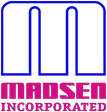
We know, we know. Most of you are not scouring the internet for the latest HVAC trends and news. But as homeowners, you do care about how efficient and effective your system is. And like any other industry, the technology and solutions of HVACs are constantly changing and evolving. The good news is you don’t have to stay on top of — because as your trusted heating and cooling experts, we do it for you.
So to ensure you’re capitalizing on all the savings, sustainability, and performance that today’s HVACs can provide, check out the top trends this year.
Important HVAC Usage & Expense Stats
- 91% of US households have some type of air conditioning.
- Heating and cooling make up about 43% of a home’s utility bills.
- Nearly 29% of your home’s energy costs come from heating.
- Households spend 35%–42% more on electricity bills when they own air conditioners. (actual increase depends on weather conditions and location)
- Air conditioners account for 6% of electricity usage at an annual cost of $29 billion to homeowners in the US.
1. Systems are Getting Smarter
It would be nearly impossible to name an industry that hasn’t been impacted by advancing technology, and HVAC is seeing that big time. The infiltration and evolution of smart home products show no sign of slowing down, with forecasts showing 68.6% of homes will have this technology by 2027 (compared to 56.62% in 2022).
As part of that growth, more and more homeowners are opting for smart thermostats or smart AC controllers to save on their energy bills. The residential sector leads the market share at 71.9%, with 8 out of 10 homeowners with smart thermostats likely to buy another device in the future.
And this product satisfaction makes total sense — given smart thermostats (EnergyStar) save 8% on heating or cooling or $50/year on electricity bills, or up to $100/year for larger homes or those often unoccupied for most of the day.
Even further, as more and more HVAC units are being connected to Wi-Fi to be controlled by portable devices, sensors can also be placed on HVAC equipment, allowing the entire system to communicate and respond to data. This means users won’t even have to adjust their air conditioning, their HVAC network will do it for them. It can also detect occupants and outdoor conditions to automate heating and cooling in real-time, ensuring optimal comfort with zero effort.
2. They’re also Getting Greener
With CDDs (cooling degree days) increasing in 95% of cities since the 1970s, and global energy demand expected to almost triple by 2050, the use of energy efficient systems is also expected to rise to offset the environmental cost.
This goes beyond just smart technology and thermostats to the main source of energy fueling heating and cooling systems. The demand for solar-powered HVACs is increasing in residences, while companies are looking to build hybrid energy sources, including solar and wind power for larger scale systems.
More homeowners are also willing to pay more for these eco-friendly products, including 46% of Baby Boomers and 61% of Millennials. But that also comes with a nice return.
High-efficiency HVAC systems — such as variable refrigerant flow (VRF) systems, geothermal heat pumps, and dual-source heat pumps — can cut the annual energy bill by nearly $140. And installing an advanced unit can result in a payback in 5 to 7 years in operating costs — all this while cutting future cooling demand by 45%. A win, win for homeowners and the environment.
3. Ductless Solutions are More in Demand
Older buildings pose a nearly impossible, and extremely expensive, task when it comes to updating their AC, especially when the structure doesn’t already have ductwork in place. And if there are ducts, it’s a less than perfect system, likely plagued with gaps and leaks, leading to endless repairs.
As a proactive solution to these issues, more HVAC technicians are turning to ductless technology. Thanks to their smaller size and greater flexibility for heating and cooling individual areas, ductless mini-split heat pumps are a great option for both a retrofit install and extending current system distribution into a new addition.
From easier installs to fewer energy losses, ductless solutions are becoming more popular in homes and new construction.
4. Customer Experience is Changing
As technology and sustainability change the way our systems cool and consume, customer expectations are changing along with it. Greater understanding of these technologies and capabilities means gone are the days where good work and competitive pricing will cut it. Competition within the industry is only increasing, and the difference maker will come from the type of customer service they provide.
Companies are now forced to ensure their technicians are trained in the latest technological advances to streamline services and meet the expectations of today’s tech-savvy homeowners. And with online testimonials, social media comments, and websites now playing a major role in consumer decision-making, having a strong online presence and reputation is vital.
These expectations also include delivering immediate, on-going attention to their customers. There’s been a rise of electronic communications to schedule appointments, send reminders, deliver invoices, and more. Field service management software is facilitating calendar syncing, cost tracking, and profit analyzation to ensure smoother operations that translates to better customer service.
Stay Cool & Current with Madsen
When it comes to all your HVAC needs, you never have to worry with Madsen. We stay on top of all the newest technology and solutions to ensure we can deliver the industry’s very best for our customers. Whether you’re looking to learn more about the latest HVAC technology, increase your energy efficiency, or simply get the best customer service in the area, contact us today.


